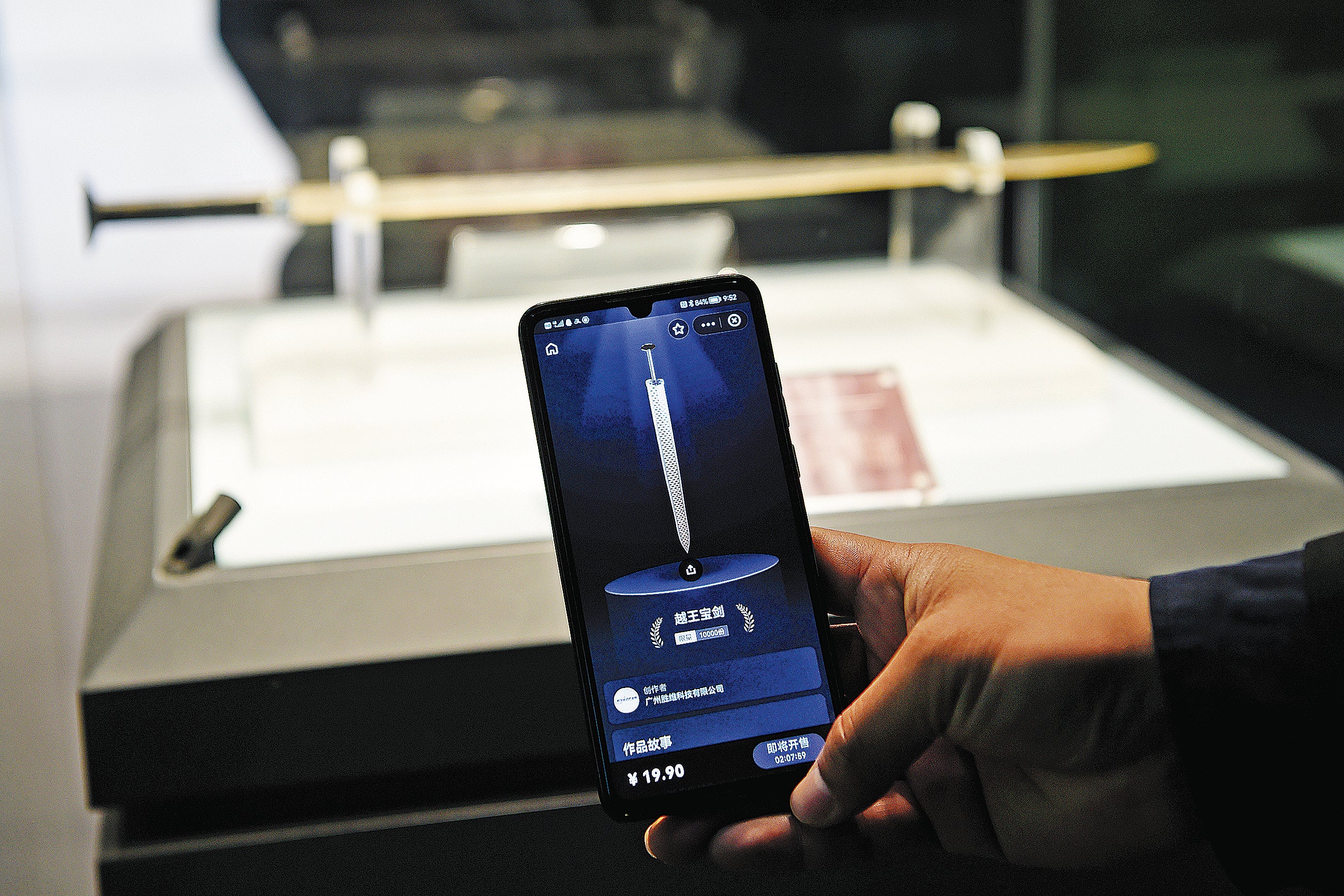Digital copies of famous sword sell out in seconds
THE ARTICLES ON THESE PAGES ARE PRODUCED BY CHINA DAILY, WHICH TAKES SOLE RESPONSIBILITY FOR THE CONTENTS

Historical artefacts are usually priceless, fragile and not to be touched. But these days, curious visitors can see them, play with them and make them part of their personal collections, all for just 19.9 yuan (£2.30).
In late October, 2021,digital versions of the Sword of Gou Jian, one of China’s most important historical artefacts, which has retained its sharpness and whose patterns remain clear after more than 2,000 years, sold out in seconds.
Ever since it was unearthed in Hubei province in 1965, the sword has been one of the prize displays at the Hubei Provincial Museum in Wuhan, the provincial capital. Covered in delicately engraved inscriptions, mysterious black rhombus patterns and blue and turquoise inlay, it is an example of the advanced design and production techniques used to make weapons during the Spring and Autumn Period (770-476 BC) and originally belonged to a famous king of the Yue State.
The digital version, co-developed by the museum and tech company Alibaba, retains every detail of the original. Viewers can zoom in on a perfectly restored version after paying the 19.90 yuan fee.
“More than 600,000 people rushed to purchase 10,000 digital copies of the sword, which sold out in three seconds!” said Wang Xianfu, deputy director of the museum, adding that he didn’t expect the offering would be so popular. “I didn’t even get one for myself.”
The idea of a digital replica is a concept based on the use of NFTs, or non-fungible tokens, which give each electronic artwork a certificate of authentication using blockchain technology. As each NFT is unique and cannot be duplicated, buyers can prove ownership. To date, the technology has been applied to a number of different items, including artworks, audio tracks, videos and games.
Wang said that because most people don’t have the chance to admire artefacts from up close, a digital copy transcends the limitations of time and space, allowing history enthusiasts to avoid crowds and inspect the objects whenever they want.

“Besides, it’s easier to view an artefact on your telephone than it is through a glass cabinet,” he said. “It’s becoming a trend for museums to develop digital replicas, which are an important contribution to creative and cultural products, and also help promote traditional culture in a way young people appreciate.”
In recent years, many Chinese museums have produced digital reproductions. In September 2021, the Shaanxi History Museum released digital replicas based on the front, back and 3D images of its most important artefact, the Tiger Tally, which was used during the Warring States Period (475-221 BC) to mobilise armies.
In November 2021, the Chengdu Museum uploaded digital versions of its famous stone rhinoceros, and the same month, 10,000 digital versions of the Small Wild Goose Pagoda and the Bell Tower, two important heritage buildings in Xi’an, Shaanxi province, were also sold.
Zhu Jianxiong, who runs the digital collection division at AntChain – part of the Ant Group, an Alibaba affiliate – said that since October, around 10 museums have produced digital replicas, and more than one million netizens have made purchases. The platform has uploaded 237 different items.
To prevent speculation, the platform forbids trading between netizens but allows buyers to give purchased items away after 180 days.
Previously published on Chinadaily.com.cn
